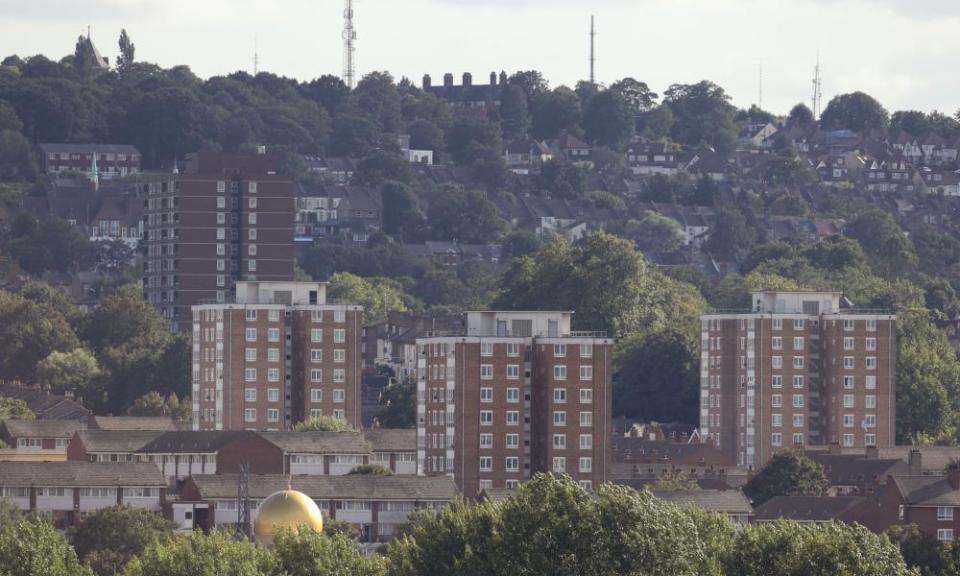Ministers urged to halt right-to-buy scheme

Ministers are facing calls to shelve Margaret Thatcher’s totemic right-to-buy scheme after a devastating analysis revealed that more than 40% of council houses sold under its terms in London are now privately rented.
The damning findings of an analysis of Freedom of Information data also show that:
• Tens of millions of pounds are being paid by local authorities to rent former council homes in order to house growing numbers of homeless families;
• Some councils have bought back their former homes at more than six times the amount they sold them for;
• Hundreds of private landlords now own five or more right-to-buy properties. There are several London boroughs where more than half the houses sold through the policy are now in the hands of private landlords. Private renters have to pay more than people living in council-owned properties.
Labour London assembly member Tom Copley, who released the report containing the new data, said the findings provided fresh evidence for why right-to-buy should be scrapped in the capital.
“Something has gone very wrong when tens of thousands of homes built to be let at social rents for the public good are now being rented out at market rates for private profit, sometimes back to the very councils that were forced to sell them,” he said.
Right-to-buy, which offers discounts to council tenants who buy their home, has been in place since 1980 and was boosted in 2012 under the Conservative-Liberal Democrat coalition government. The latest analysis found that 42% of homes sold under the scheme in London are now rented out by private landlords, up from 36% in 2014.
Around 466 individuals or companies have the leasehold for at least five former council homes each, while there are 2,333 right-to-buy properties where the local authority pays private landlords to house homeless families across London. Councils have spent £22m a year on renting back properties they once owned to use as temporary accommodation.
In Ealing, the council has spent £107m buying back 516 former council properties that it had originally sold for £16m. Peter Mason, Ealing’s cabinet member for housing, said the report highlighted “exactly some of the more unforgivable impacts of Thatcher’s right-to-buy scheme, which she launched with great fanfare in Northolt [a town in the borough of Ealing]”.
“Ealing council passionately believes in council house building, which is why we have launched the biggest programme in London,” he said. “Between increased land prices, a long-term cap on borrowing and being forced to give up much of the receipts from the sale of council homes, the system as it stands is entirely rigged against local authorities who wish to build new council homes.”
According to the Resolution Foundation thinktank, local authorities and housing associations in England have built one home for every two sold under the right-to-buy scheme.
Jon Sparkes, chief executive of homelessness charity Crisis, said: “Social housing is more affordable and more secure than private renting, and provides much-needed stability for those at risk of homelessness. It is unacceptable to see what little social housing options are available are being removed.
“What we need to see from the government going forward is suspension of the right-to-buy while it invests to build the 90,000 social homes needed in England each year to keep up with demand.”
Lindsay Judge, senior policy analyst at the Resolution Foundation, said: “It’s likely to be too late for a ban on right-to-buy having a significant impact on London, as the remaining social housing stock is largely concentrated among low-income households. But what these figures do show is the acute need to build more homes in the capital across a range of tenures, including social housing.”
Polly Neate, chief executive at Shelter, called for 3.1 million new social homes to address the housing crisis. “While right-to-buy has helped many families get on to the housing ladder, just three years after it was introduced in 1980, the supply of properties available for social rent had halved – pulling up the ladder for future generations,” she said. “We’re now in the ridiculous position of seeing local authorities across the country, not just in London, renting former council properties back from private landlords, at great expense, in order to house growing numbers of homeless families.”
Government officials said right-to-buy purchasers must repay a portion of their discount to their council if they sell within the first five years. And those who sell within 10 years of purchase must offer their local authority first refusal to buy it back.
Kit Malthouse, the housing minister, said: “Under our right-to-buy scheme, over 100,000 social housing tenants have now got a foot on the property ladder since 2010, including more than 17,000 in London. We have lifted the housing revenue account borrowing cap for local authorities so they can build more houses in areas where they are most needed, and delivered 88,000 new affordable homes in London since 2010.”

 Yahoo News
Yahoo News 